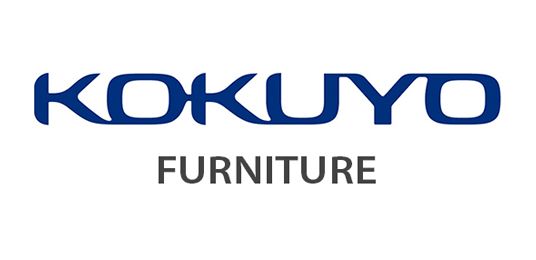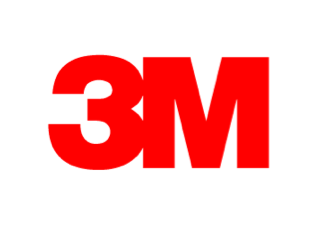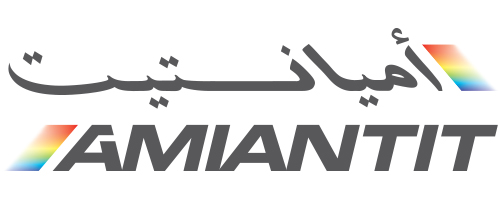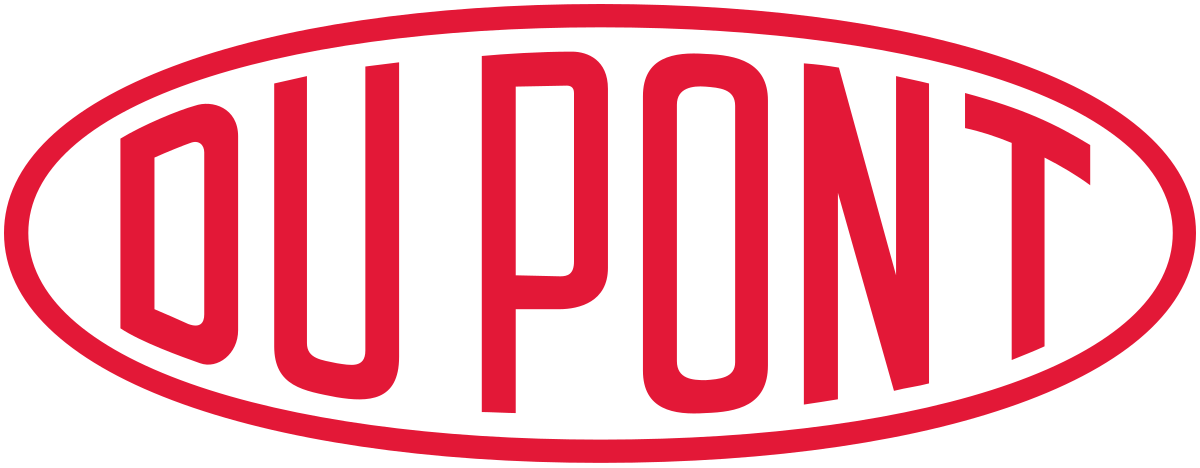CubeSat Market By Component (Structure, Payloads, Solar Panels & Arrays, GSE, C&DH, Software); By Size (1U, 2U, 3U, 6U, Others); By Application (Communication, Earth Observation & Remote Sensing, Mapping and Navigation, Others); By Region (North America, Europe, Asia Pacific, Latin America, Middle East & Africa) - Global Market Analysis, Trends, Opportunity and Forecast, 2022-2032
Cubesat Market Overview and Definition
The global cubesat market size is expected to grow from USD 190.9 million in 2021 to USD 920.5 million in 2032, at a CAGR of 18.7% during the forecast period 2022-2032. CubeSats are a class of research spacecraft called nanosatellites. CubeSats have a mass of no more than 1.33 kilograms per unit, and often use commercial off-the-shelf components for their electronics and structure. CubeSats are miniature satellites that have been used exclusively in low Earth orbit for 15 years and are now being used for interplanetary missions as well.
CubeSats are small, standardized satellites that have become increasingly popular due to their low cost and ease of deployment. The CubeSat market has been growing rapidly, with the number of launches increasing each year. In 2020, a total of 237 CubeSats were launched, representing a 25% increase from the previous year. The market is driven by a range of applications, including earth observation, communication, scientific research, and technology demonstration. The market is expected to continue to grow in the coming years, driven by the increasing demand for low-cost and flexible satellite solutions. Some of the key players in the CubeSat market include Tyvak Nano-Satellite Systems, Planet Labs, NanoRacks, and GomSpace.
Cubesat Market Key Drivers
The CubeSat market is driven by several factors, including:
Low cost: CubeSats are much cheaper to build and launch than traditional satellites, making them an attractive option for a wide range of applications.
Standardization: CubeSats follow a set of standardized designs and specifications, which simplifies the manufacturing process and allows for economies of scale.
Rapid development: The small size and standardized design of CubeSats allow for rapid development and deployment of new satellites.
Flexibility: CubeSats can be customized to suit a wide range of applications, from scientific research to remote sensing to telecommunications.
Growing demand for data: The increasing demand for data from space-based systems, such as earth observation and remote sensing, is driving the demand for CubeSats.
Access to space: The availability of low-cost launch options, such as ride-sharing on larger rockets or dedicated small launchers, has made it easier to access space and deploy CubeSats.
Growing Number of Space Missions
Space technologies such as satellites are essential instruments for the development and progress of humankind. Satellites are used for earth observation, communication, atmospheric navigation studies, astronomical observations, and military applications. However, the development of giant satellites and carrying missions cost billions of dollars to the government and private space companies. In order to reduce costs in carrying satellite launch missions, scientists came up with small satellites and cube satellites. CubeSats provide a cost-effective platform for science investigations, new technology demonstrations, and advanced mission concepts.
Rising Penetration of Big Data and IoT
As the private space industry is booming and private spaceflight companies are making incredible progress around the world, it is expected that the demand for CubeSats will increase in upcoming years. These nanosatellites are allowing the new space industry to carry out different missions at very low cost and associated with minimum risks. The North America region is expected to have the highest demand for nanosatellite during the forecasted period. These CubeSats in the North America region are widely being used for delivering useful scientific data and commercial services.
Rising Democratization of Space
From the beginning, access to space was prohibitively expensive, and only nations and big corporations with large facilities and an experienced cadre of engineers could finance these ventures. The emergence of private space companies and the development of cheaper ways to carry space missions have made space accessible to a larger group of organizations. SmallSats and CubeSats are perfect solutions for several applications such as space exploration, space imaging, and in various industrial sectors, including commercialization. CubeSats are available in different sizes and are used for complex space missions such as tracking space junk and map the distribution of galactic cosmic radiation across the night sky.
Cubesat Market Challenges
While the CubeSat market has many advantages, there are also some challenges that the industry faces, including:
Limited capabilities: Due to their small size and limited power, CubeSats have limited capabilities compared to larger, more expensive satellites.
Regulatory challenges: Regulations around CubeSat deployment and operations can be complex and vary from country to country, which can present challenges for companies operating in multiple regions.
Reliability: The small size and relatively low cost of CubeSats can sometimes result in lower levels of reliability and shorter lifetimes compared to larger, more expensive satellites.
Crowded orbits: As the number of CubeSats in orbit increases, there is a risk of collisions and other incidents that could cause damage to the satellites or other space assets.
Competition: The low cost and ease of deployment of CubeSats has led to a crowded and competitive market, which can make it challenging for new entrants to gain a foothold.
Integration with existing infrastructure: CubeSats need to be able to integrate with existing space infrastructure, such as ground stations and communication networks, which can present technical and logistical challenges.
Cubesat Market : Report Scope |
|
|
Base Year Market Size |
2021 |
|
Forecast Year Market Size |
2022-2032 |
|
CAGR Value |
18.7 % |
|
Segmentation |
|
|
Challenges |
|
|
Growth Drivers |
|
Cubesat Market Segmentation
The research offers a comprehensive analysis of the CubeSat market with respect to following sub-markets:
By Component
- Structure
- Payloads
- Solar Panels & Arrays
- GSE
- C&DH
- Software
By Size
- 1U
- 2U
- 3U
- 6U
- Others
By Application
- Communication
- Earth Observation & Remote Sensing
- Mapping and Navigation
- Others
By Geography
- North America (U.S. & Canada)
- Europe (Germany, United Kingdom, France, Italy, Spain, Russia and Rest of Europe)
- Asia Pacific (China, India, Japan, South Korea, Indonesia, Australia, New Zealand and Rest of Asia Pacific)
- Latin America (Brazil, Mexico, Argentina and Rest of Latin America)
- Middle East & Africa (GCC, North Africa, South Africa and Rest of Middle East & Africa)
Cubesat Market: Regional Synopsis
The CubeSat market is a global market, with companies and organizations operating in many regions around the world. Some key regions in the CubeSat market include:
North America: The United States is a major player in the CubeSat market, with a number of companies and organizations involved in the design, manufacture, and deployment of CubeSats. The US government has also been a major customer of CubeSats for a range of applications, including remote sensing and scientific research.
Europe: Europe is another key region in the CubeSat market, with companies and organizations in countries such as France, Germany, and Italy involved in CubeSat design, manufacture, and deployment. The European Space Agency (ESA) has also been involved in CubeSat development and deployment.
Asia-Pacific: The Asia-Pacific region is also an important market for CubeSats, with countries such as Japan, China, and India involved in CubeSat development and deployment. In particular, Japan has been a pioneer in the CubeSat market, with a number of successful missions.
Middle East and Africa: While the CubeSat market is still relatively small in the Middle East and Africa, there is growing interest in CubeSats in the region. In particular, there has been interest in using CubeSats for remote sensing and telecommunications applications.
Cubesat Market: Recent Developments
Some recent developments in the CubeSat market include:
Increasing demand for Earth observation CubeSats: There has been a growing demand for CubeSats for Earth observation applications, driven by the need for more frequent and higher resolution imagery. This has led to new partnerships and collaborations between CubeSat companies and Earth observation companies.
Growing interest in interplanetary CubeSats: There has been increasing interest in using CubeSats for interplanetary missions, such as Mars exploration. In 2021, NASA's Mars Helicopter Ingenuity made history as the first powered flight on another planet, demonstrating the potential of small, lightweight spacecraft for planetary exploration.
Advancements in CubeSat propulsion technology: There have been advancements in CubeSat propulsion technology, with new options such as electric and chemical propulsion systems becoming available. This is expected to increase the capabilities of CubeSats and allow them to reach higher orbits or perform more complex maneuvers.
Expansion of CubeSat services: CubeSat companies are expanding their services beyond just providing hardware, to include end-to-end mission management, data processing, and other services. This is aimed at making it easier and more cost-effective for customers to use CubeSats for a range of applications.
Development of new CubeSat standards: There are ongoing efforts to develop new CubeSat standards that allow for greater interoperability between different CubeSat platforms and components. This is expected to make it easier for companies and organizations to develop and deploy CubeSats.
Cubesat Market Key Players
- Clyde Space Ltd.
- EnduroSat AD
- GomSpace A/S
- Innovative Solutions in Space BV
- Interorbital Systems Corporation
- Planet Labs
- Group of Astrodynamics for the Use of Space Systems Srl
- Tyvak Inc.
- Lockheed Martin
- Boeing
- Northrop Grumman
Research Methodology
Market Definition and List of Abbreviations
1. Executive Summary
2. Growth Drivers & Issues in Global CubeSats Market
2.1. North America
2.2. Europe
2.3. Asia Pacific
2.4. Europe
2.5. Middle East & Africa
3. Global CubeSats Market Trends
4. Opportunities in Global CubeSats Market
5. Recent Industry Activities, 2019
6. Porter's Five Forces Analysis
7. Macro-Economic Trends
8. PEST Analysis
9. Market Value Chain and Supply Chain Analysis
10. Global CubeSats Market Value (USD Million), 2019-2025
11. Global CubeSats Market Segmentation Analysis, By Component
11.1. Introduction
11.2. Market Attractiveness, By Component
11.3. BPS Analysis, By Component
11.4. Structure Market Value (USD Million) Forecast & Y-o-Y Growth Analysis (%), 2019-2025
11.5. Payloads Market Value (USD Million) Forecast & Y-o-Y Growth Analysis (%), 2019-2025
11.6. Solar Panels & Arrays Market Value (USD Million) Forecast & Y-o-Y Growth Analysis (%), 2019-2025
11.7. GSE Market Value (USD Million) Forecast & Y-o-Y Growth Analysis (%), 2019-2025
11.8. C&DH Market Value (USD Million) Forecast & Y-o-Y Growth Analysis (%), 2019-2025
11.9. Software Market Value (USD Million) Forecast & Y-o-Y Growth Analysis (%), 2019-2025
12. Global CubeSats Market Segmentation Analysis, Size
12.1. Introduction
12.2. Market Attractiveness, Size
12.3. BPS Analysis, Size
12.4. 1U Market Value (USD Million) Forecast & Y-o-Y Growth Analysis (%), 2019-2025
12.5. 2U Market Value (USD Million) Forecast & Y-o-Y Growth Analysis (%), 2019-2025
12.6. 3U Market Value (USD Million) Forecast & Y-o-Y Growth Analysis (%), 2019-2025
12.7. 6U Market Value (USD Million) Forecast & Y-o-Y Growth Analysis (%), 2019-2025
12.8. Others Market Value (USD Million) Forecast & Y-o-Y Growth Analysis (%), 2019-2025
13. Global CubeSats Market Segmentation Analysis, By Application
13.1. Introduction
13.2. Market Attractiveness, By Application
13.3. BPS Analysis, By Application
13.4. Communication Market Value (USD Million) Forecast & Y-o-Y Growth Analysis (%), 2019-2025
13.5. Earth Observation & Remote Sensing Market Value (USD Million) Forecast & Y-o-Y Growth Analysis (%), 2019-2025
13.6. Mapping and Navigation Market Value (USD Million) Forecast & Y-o-Y Growth Analysis (%), 2019-2025
13.7. Other Applications Market Value (USD Million) Forecast & Y-o-Y Growth Analysis (%), 2019-2025
14. Geographical Analysis
14.1. Introduction
14.2. North America Market Value (USD Million) Forecast & Y-o-Y Growth Analysis (%), 2019-2025
14.2.1. By Component
14.2.1.1. Introduction
14.2.1.2. Market Attractiveness, By Component
14.2.1.3. BPS Analysis, By Component
14.2.1.4. Structure Market Value (USD Million) Forecast & Y-o-Y Growth Analysis (%), 2019-2025
14.2.1.5. Payloads Market Value (USD Million) Forecast & Y-o-Y Growth Analysis (%), 2019-2025
14.2.1.6. Solar Panels & Arrays Market Value (USD Million) Forecast & Y-o-Y Growth Analysis (%), 2019-2025
14.2.1.7. GSE Market Value (USD Million) Forecast & Y-o-Y Growth Analysis (%), 2019-2025
14.2.1.8. C&DH Market Value (USD Million) Forecast & Y-o-Y Growth Analysis (%), 2019-2025
14.2.1.9. Software Market Value (USD Million) Forecast & Y-o-Y Growth Analysis (%), 2019-2025
14.2.2. By Size
14.2.2.1. Introduction
14.2.2.2. Market Attractiveness, Size
14.2.2.3. BPS Analysis, Size
14.2.2.4. 1U Market Value (USD Million) Forecast & Y-o-Y Growth Analysis (%), 2019-2025
14.2.2.5. 2U Market Value (USD Million) Forecast & Y-o-Y Growth Analysis (%), 2019-2025
14.2.2.6. 3U Market Value (USD Million) Forecast & Y-o-Y Growth Analysis (%), 2019-2025
14.2.2.7. 6U Market Value (USD Million) Forecast & Y-o-Y Growth Analysis (%), 2019-2025
14.2.2.8. Others Market Value (USD Million) Forecast & Y-o-Y Growth Analysis (%), 2019-2025
14.2.3. By Application
14.2.3.1. Introduction
14.2.3.2. Market Attractiveness, By Application
14.2.3.3. BPS Analysis, By Application
14.2.3.4. Communication Market Value (USD Million) Forecast & Y-o-Y Growth Analysis (%), 2019-2025
14.2.3.5. Earth Observation & Remote Sensing Market Value (USD Million) Forecast & Y-o-Y Growth Analysis (%), 2019-2025
14.2.3.6. Mapping and Navigation Market Value (USD Million) Forecast & Y-o-Y Growth Analysis (%), 2019-2025
14.2.3.7. Other Applications Market Value (USD Million) Forecast & Y-o-Y Growth Analysis (%), 2019-2025
14.2.4. By Country
14.2.4.1. Market Attractiveness, By Country
14.2.4.2. BPS Analysis, By Country
14.2.4.3. U.S. Market Value (USD Million) Forecast & Y-o-Y Growth Analysis (%), 2019-2025
14.2.4.4. Canada Market Value (USD Million) Forecast & Y-o-Y Growth Analysis (%), 2019-2025
14.3. Europe Market Value (USD Million) Forecast & Y-o-Y Growth Analysis (%), 2019-2025
14.3.1. By Component
14.3.1.1. Introduction
14.3.1.2. Market Attractiveness, By Component
14.3.1.3. BPS Analysis, By Component
14.3.1.4. Structure Market Value (USD Million) Forecast & Y-o-Y Growth Analysis (%), 2019-2025
14.3.1.5. Payloads Market Value (USD Million) Forecast & Y-o-Y Growth Analysis (%), 2019-2025
14.3.1.6. Solar Panels & Arrays Market Value (USD Million) Forecast & Y-o-Y Growth Analysis (%), 2019-2025
14.3.1.7. GSE Market Value (USD Million) Forecast & Y-o-Y Growth Analysis (%), 2019-2025
14.3.1.8. C&DH Market Value (USD Million) Forecast & Y-o-Y Growth Analysis (%), 2019-2025
14.3.1.9. Software Market Value (USD Million) Forecast & Y-o-Y Growth Analysis (%), 2019-2025
14.3.2. By Size
14.3.2.1. Introduction
14.3.2.2. Market Attractiveness, Size
14.3.2.3. BPS Analysis, Size
14.3.2.4. 1U Market Value (USD Million) Forecast & Y-o-Y Growth Analysis (%), 2019-2025
14.3.2.5. 2U Market Value (USD Million) Forecast & Y-o-Y Growth Analysis (%), 2019-2025
14.3.2.6. 3U Market Value (USD Million) Forecast & Y-o-Y Growth Analysis (%), 2019-2025
14.3.2.7. 6U Market Value (USD Million) Forecast & Y-o-Y Growth Analysis (%), 2019-2025
14.3.2.8. Others Market Value (USD Million) Forecast & Y-o-Y Growth Analysis (%), 2019-2025
14.3.3. By Application
14.3.3.1. Introduction
14.3.3.2. Market Attractiveness, By Application
14.3.3.3. BPS Analysis, By Application
14.3.3.4. Communication Market Value (USD Million) Forecast & Y-o-Y Growth Analysis (%), 2019-2025
14.3.3.5. Earth Observation & Remote Sensing Market Value (USD Million) Forecast & Y-o-Y Growth Analysis (%), 2019-2025
14.3.3.6. Mapping and Navigation Market Value (USD Million) Forecast & Y-o-Y Growth Analysis (%), 2019-2025
14.3.3.7. Other Applications Market Value (USD Million) Forecast & Y-o-Y Growth Analysis (%), 2019-2025
14.3.4. By Country
14.3.4.1. Market Attractiveness, By Country
14.3.4.2. BPS Analysis, By Country
14.3.4.3. Germany Market Value (USD Million) Forecast & Y-o-Y Growth Analysis (%), 2019-2025
14.3.4.4. United Kingdom Market Value (USD Million) Forecast & Y-o-Y Growth Analysis (%), 2019-2025
14.3.4.5. France Market Value (USD Million) Forecast & Y-o-Y Growth Analysis (%), 2019-2025
14.3.4.6. Italy Market Value (USD Million) Forecast & Y-o-Y Growth Analysis (%), 2019-2025
14.3.4.7. Spain Market Value (USD Million) Forecast & Y-o-Y Growth Analysis (%), 2019-2025
14.3.4.8. Russia Market Value (USD Million) Forecast & Y-o-Y Growth Analysis (%), 2019-2025
14.3.4.9. Rest of Europe Market Value (USD Million) Forecast & Y-o-Y Growth Analysis (%), 2019-2025
14.4. Asia Pacific Market Value (USD Million) Forecast & Y-o-Y Growth Analysis (%), 2019-2025
14.4.1. By Component
14.4.1.1. Introduction
14.4.1.2. Market Attractiveness, By Component
14.4.1.3. BPS Analysis, By Component
14.4.1.4. Structure Market Value (USD Million) Forecast & Y-o-Y Growth Analysis (%), 2019-2025
14.4.1.5. Payloads Market Value (USD Million) Forecast & Y-o-Y Growth Analysis (%), 2019-2025
14.4.1.6. Solar Panels & Arrays Market Value (USD Million) Forecast & Y-o-Y Growth Analysis (%), 2019-2025
14.4.1.7. GSE Market Value (USD Million) Forecast & Y-o-Y Growth Analysis (%), 2019-2025
14.4.1.8. C&DH Market Value (USD Million) Forecast & Y-o-Y Growth Analysis (%), 2019-2025
14.4.1.9. Software Market Value (USD Million) Forecast & Y-o-Y Growth Analysis (%), 2019-2025
14.4.2. By Size
14.4.2.1. Introduction
14.4.2.2. Market Attractiveness, Size
14.4.2.3. BPS Analysis, Size
14.4.2.4. 1U Market Value (USD Million) Forecast & Y-o-Y Growth Analysis (%), 2019-2025
14.4.2.5. 2U Market Value (USD Million) Forecast & Y-o-Y Growth Analysis (%), 2019-2025
14.4.2.6. 3U Market Value (USD Million) Forecast & Y-o-Y Growth Analysis (%), 2019-2025
14.4.2.7. 6U Market Value (USD Million) Forecast & Y-o-Y Growth Analysis (%), 2019-2025
14.4.2.8. Others Market Value (USD Million) Forecast & Y-o-Y Growth Analysis (%), 2019-2025
14.4.3. By Application
14.4.3.1. Introduction
14.4.3.2. Market Attractiveness, By Application
14.4.3.3. BPS Analysis, By Application
14.4.3.4. Communication Market Value (USD Million) Forecast & Y-o-Y Growth Analysis (%), 2019-2025
14.4.3.5. Earth Observation & Remote Sensing Market Value (USD Million) Forecast & Y-o-Y Growth Analysis (%), 2019-2025
14.4.3.6. Mapping and Navigation Market Value (USD Million) Forecast & Y-o-Y Growth Analysis (%), 2019-2025
14.4.3.7. Other Applications Market Value (USD Million) Forecast & Y-o-Y Growth Analysis (%), 2019-2025
14.4.4. By Country
14.4.4.1. Market Attractiveness, By Country
14.4.4.2. BPS Analysis, By Country
14.4.4.3. China Market Value (USD Million) Forecast & Y-o-Y Growth Analysis (%), 2019-2025
14.4.4.4. India Market Value (USD Million) Forecast & Y-o-Y Growth Analysis (%), 2019-2025
14.4.4.5. Japan Market Value (USD Million) Forecast & Y-o-Y Growth Analysis (%), 2019-2025
14.4.4.6. South Korea Market Value (USD Million) Forecast & Y-o-Y Growth Analysis (%), 2019-2025
14.4.4.7. Indonesia Market Value (USD Million) Forecast & Y-o-Y Growth Analysis (%), 2019-2025
14.4.4.8. Taiwan Market Value (USD Million) Forecast & Y-o-Y Growth Analysis (%), 2019-2025
14.4.4.9. Australia Market Value (USD Million) Forecast & Y-o-Y Growth Analysis (%), 2019-2025
14.4.4.10. New Zealand Market Value (USD Million) Forecast & Y-o-Y Growth Analysis (%), 2019-2025
14.4.4.11. Rest of Asia Pacific Market Value (USD Million) Forecast & Y-o-Y Growth Analysis (%), 2019-2025
14.5. Latin America Market Value (USD Million) Forecast & Y-o-Y Growth Analysis (%), 2019-2025
14.5.1. By Component
14.5.1.1. Introduction
14.5.1.2. Market Attractiveness, By Component
14.5.1.3. BPS Analysis, By Component
14.5.1.4. Structure Market Value (USD Million) Forecast & Y-o-Y Growth Analysis (%), 2019-2025
14.5.1.5. Payloads Market Value (USD Million) Forecast & Y-o-Y Growth Analysis (%), 2019-2025
14.5.1.6. Solar Panels & Arrays Market Value (USD Million) Forecast & Y-o-Y Growth Analysis (%), 2019-2025
14.5.1.7. GSE Market Value (USD Million) Forecast & Y-o-Y Growth Analysis (%), 2019-2025
14.5.1.8. C&DH Market Value (USD Million) Forecast & Y-o-Y Growth Analysis (%), 2019-2025
14.5.1.9. Software Market Value (USD Million) Forecast & Y-o-Y Growth Analysis (%), 2019-2025
14.5.2. By Size
14.5.2.1. Introduction
14.5.2.2. Market Attractiveness, Size
14.5.2.3. BPS Analysis, Size
14.5.2.4. 1U Market Value (USD Million) Forecast & Y-o-Y Growth Analysis (%), 2019-2025
14.5.2.5. 2U Market Value (USD Million) Forecast & Y-o-Y Growth Analysis (%), 2019-2025
14.5.2.6. 3U Market Value (USD Million) Forecast & Y-o-Y Growth Analysis (%), 2019-2025
14.5.2.7. 6U Market Value (USD Million) Forecast & Y-o-Y Growth Analysis (%), 2019-2025
14.5.2.8. Others Market Value (USD Million) Forecast & Y-o-Y Growth Analysis (%), 2019-2025
14.5.3. By Application
14.5.3.1. Introduction
14.5.3.2. Market Attractiveness, By Application
14.5.3.3. BPS Analysis, By Application
14.5.3.4. Communication Market Value (USD Million) Forecast & Y-o-Y Growth Analysis (%), 2019-2025
14.5.3.5. Earth Observation & Remote Sensing Market Value (USD Million) Forecast & Y-o-Y Growth Analysis (%), 2019-2025
14.5.3.6. Mapping and Navigation Market Value (USD Million) Forecast & Y-o-Y Growth Analysis (%), 2019-2025
14.5.3.7. Other Applications Market Value (USD Million) Forecast & Y-o-Y Growth Analysis (%), 2019-2025
14.5.4. By Country
14.5.4.1. Market Attractiveness, By Country
14.5.4.2. BPS Analysis, By Country
14.5.4.3. Brazil Market Value (USD Million) Forecast & Y-o-Y Growth Analysis (%), 2019-2025
14.5.4.4. Mexico Market Value (USD Million) Forecast & Y-o-Y Growth Analysis (%), 2019-2025
14.5.4.5. Rest of Latin America Market Value (USD Million) Forecast & Y-o-Y Growth Analysis (%), 2019-2025
14.6. Middle East & Africa Market Value (USD Million) Forecast & Y-o-Y Growth Analysis (%), 2019-2025
14.6.1. By Component
14.6.1.1. Introduction
14.6.1.2. Market Attractiveness, By Component
14.6.1.3. BPS Analysis, By Component
14.6.1.4. Structure Market Value (USD Million) Forecast & Y-o-Y Growth Analysis (%), 2019-2025
14.6.1.5. Payloads Market Value (USD Million) Forecast & Y-o-Y Growth Analysis (%), 2019-2025
14.6.1.6. Solar Panels & Arrays Market Value (USD Million) Forecast & Y-o-Y Growth Analysis (%), 2019-2025
14.6.1.7. GSE Market Value (USD Million) Forecast & Y-o-Y Growth Analysis (%), 2019-2025
14.6.1.8. C&DH Market Value (USD Million) Forecast & Y-o-Y Growth Analysis (%), 2019-2025
14.6.1.9. Software Market Value (USD Million) Forecast & Y-o-Y Growth Analysis (%), 2019-2025
14.6.2. By Size
14.6.2.1. Introduction
14.6.2.2. Market Attractiveness, Size
14.6.2.3. BPS Analysis, Size
14.6.2.4. 1U Market Value (USD Million) Forecast & Y-o-Y Growth Analysis (%), 2019-2025
14.6.2.5. 2U Market Value (USD Million) Forecast & Y-o-Y Growth Analysis (%), 2019-2025
14.6.2.6. 3U Market Value (USD Million) Forecast & Y-o-Y Growth Analysis (%), 2019-2025
14.6.2.7. 6U Market Value (USD Million) Forecast & Y-o-Y Growth Analysis (%), 2019-2025
14.6.2.8. Others Market Value (USD Million) Forecast & Y-o-Y Growth Analysis (%), 2019-2025
14.6.3. By Application
14.6.3.1. Introduction
14.6.3.2. Market Attractiveness, By Application
14.6.3.3. BPS Analysis, By Application
14.6.3.4. Communication Market Value (USD Million) Forecast & Y-o-Y Growth Analysis (%), 2019-2025
14.6.3.5. Earth Observation & Remote Sensing Market Value (USD Million) Forecast & Y-o-Y Growth Analysis (%), 2019-2025
14.6.3.6. Mapping and Navigation Market Value (USD Million) Forecast & Y-o-Y Growth Analysis (%), 2019-2025
14.6.3.7. Other Applications Market Value (USD Million) Forecast & Y-o-Y Growth Analysis (%), 2019-2025
14.6.4. By Geography
14.6.4.1. Market Attractiveness, By Geography
14.6.4.2. BPS Analysis, By Geography
14.6.4.3. GCC Market Value (USD Million) Forecast & Y-o-Y Growth Analysis (%), 2019-2025
14.6.4.4. North Africa Market Value (USD Million) Forecast & Y-o-Y Growth Analysis (%), 2019-2025
14.6.4.5. South Africa Market Value (USD Million) Forecast & Y-o-Y Growth Analysis (%), 2019-2025
14.6.4.6. Rest of the Middle East & Africa Market Value (USD Million) Forecast & Y-o-Y Growth Analysis (%), 2019-2025
15. Competitive Landscape
15.1. Market Share of Key Players
15.2. Market Positioning of Major Players in Global CubeSats Market
15.3. Company Profiles
15.3.1. Clyde Space Ltd.
15.3.1.1. Company Overview
15.3.1.2. Product Offered
15.3.1.3. Business Strategy
15.3.1.4. Financials
15.3.1.5. SWOT Analysis
15.3.1.6. Market Share Analysis
15.3.1.7. Key Achievements & Developments
15.3.2. EnduroSat AD
15.3.3. GomSpace A/S
15.3.4. Innovative Solutions in Space BV
15.3.5. Interorbital Systems Corporation
15.3.6. Planet Labs
15.3.7. Group of Astrodynamics for the Use of Space Systems Srl
15.3.8. Tyvak Inc.
15.3.9. Lockheed Martin
15.3.10. Boeing
15.3.11. Northrop Grumann
15.3.12. Other Major & Niche Players
16. Disclaimer

Need Customized Report for Your Business ?
Utilize the Power of Customized Research Aligned with Your Business Goals
Request for Customized Report- Quick Contact -
- ISO Certified Logo -

















